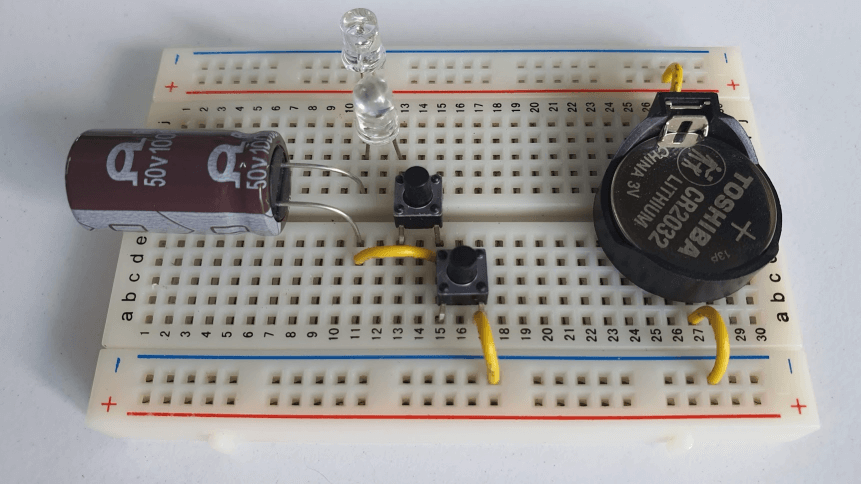A capacitor is an electronic component made by placing two metal plates close to each other. Capacitors store electrical energy in the form of an electric field.
* This simulation only works while pushing with the mouse.
* In the case of mobile devices, other tasks such as image selection are executed if you keep pressing the screen, so please run it on a desktop or laptop as much as possible.
* This simulation is based on an actual working circuit (except the circuit on the right). The power supply voltage is 3V, the capacitor is 1000μF, and the resistance for current regulation is 0Ω.

A circuit that illuminates a short time

When the switch is pressed, current flows through the circuit, and the capacitor starts to charge. The more electric charge builds up in the capacitor, the weaker the current flow.
Charges accumulated in the capacitor remain as is unless otherwise discharged.
A capacitor is a cut-off part of a circuit when viewed structurally. Therefore, the current cannot continue to flow forever.
Add a switch for discharging

When the left switch is pressed, the capacitor is charged.
When the right switch is pressed, the capacitor's charges flow through the LED and light up.
Delay switch

When turned on, the LED turns on slowly to charge the capacitor, and when turned off, the LED turns off slowly due to the electric energy of the capacitor.
By using this circuit, it is possible to prevent a sudden change in current from being applied to electronic devices such as light bulbs.